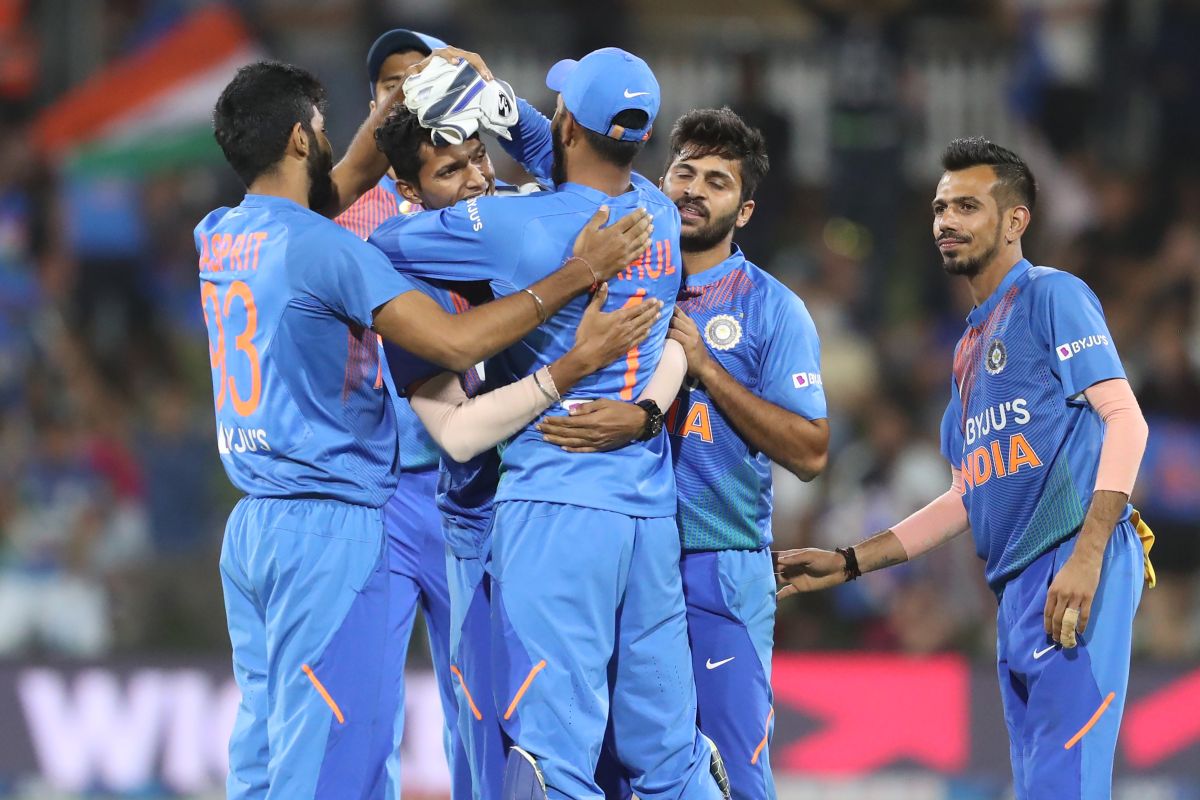With a 7-run win in the fifth and final T20I at Mount Maunganui’s Bay Oval on Sunday, the Men in Blue whitewashed the Kiwis 5-0. The unprecedented feat saw India slowly finding an answer to their woes in the shortest format. The clean sweep, meanwhile, has increased problems for New Zealand, who were at the receiving end.
However, with the World T20 round the corner, India’s recent result is a wakeup call for the other contenders of the coveted trophy. The series not only served as a litmus test for Virat Kohli’s men but also gave the selection committee an opportunity to try their hands on all the facets.
Here are the talking points from the recently-concluded T20I series —
Dominance of India/New Zealand’s submission:
Undoubtedly, India were superb with the bat and ball but New Zealand could have played better. If we keep the first two T20Is of the series aside, New Zealand fought neck-and-neck with the Indian team but failed to get over the line. In some instances, the Men in Blue edged the hosts whereas, on the other occasions, the Kiwis themselves made a mountain of a molehill and threw the match away. Had New Zealand not lost their nerves in the tense situations, the series could have gone either way.
Sanju Samson failing to grab the opportunity:
Getting his second match in 2019 after more than a 4-year gap, Samson could only stand for 2 balls in the T20I match against Sri Lanka. However, the selection committee decided to give the Keralite one more chance to prove his mettle and this time in the last two T20Is against New Zealand. But some careless shot selections let Sanju and his supporters down. The right-handed batsman disappointed with the scores of 8 and 2, making the chances of his comeback look bleak.
Jasprit Bumrah back in form:
Returning from injury, the path was never easy for Jasprit Bumrah, but the 26-year-old showed that precision is almost a daily task for him. The pace spearhead made the Kiwi batsmen toil hard for runs. Though skipper Kane Williamson took better of Bumrah in the 4th T20I, the speedster was terrific throughout the series. Leaving the 3rd T20I aside, Bumrah bowled 16 overs in 4 matches and conceded just 84 runs with 6 wickets to his name.
India’s new wicketkeeper-batsman KL Rahul:
The flop performances of India regular wicketkeeper-batsman Rishabh Pant had left the selection committee bemused, but Rahul’s scintillating form with the bat along with his safe pair of hands behind the stumps has given the selection committee plenty of options for the middle-order.
Rahul, after making 45 in the final T20I against New Zealand on Sunday, became the highest run-scorer for India (224) in any bilateral T20I series. The Man of the Series overtook Virat Kohli’s record of 199 runs which the latter had made against Australia in a three-match series in 2016.
A more reliable Indian middle-order:
The contribution of India’s middle-order also grabbed the eyeballs, especially two match-winning knocks from Shreyas Iyer (58* off 29) and Manish Pandey (50* off 36) in the first and fourth T20Is, respectively.
However, Iyer performing with the bat was nothing new, but Manish Pandey’s form will give India plenty of options for the middle order, especially at a time when Rahul is donning the wicketkeeping gloves for India.
Kane Williamson defying the odds:
On one hand where many of the New Zealand batters were struggling to play the Indian bowlers, Kane Williamson, on the other, was tonking everyone to the stands, including India ace pacer Jasprit Bumrah.
In the 4th T20I, where Bumrah finished with none for 45 in his four overs and none for 17 in the following Super Over, Williamson was the wrecker-in-chief. He, as usual, didn’t try to hit the ball hard and relied on his timing – something which makes him one of the toughest batsmen to bowl to.
But New Zealand’s poor luck saw their prolific run-scorer damaging his left shoulder during fielding in the third T20I and getting out of the remaining two matches, leaving the hosts in a precarious situation.
The classy right-hander scored 160 runs at an average of 53.33 in the three matches he played in the series.
New Zealand’s super-over misery continues:
Time has changed, opponents have changed but New Zealand’s fate with the Super Overs is constant as the Northern star. The Kiwis failed to defend a target of 18 runs in the third T20I and could not save 14 runs in the fourth against India in the recently-concluded series.
Their tragic super-over story which commenced in 2008 against West Indies in their own backyard has seen them win only one (against Australia in 2010 at Christchurch) out of the 7 one-over eliminator games played till date. The story also includes the 2019 World Cup final where they faced a heartbreaking loss to England.











